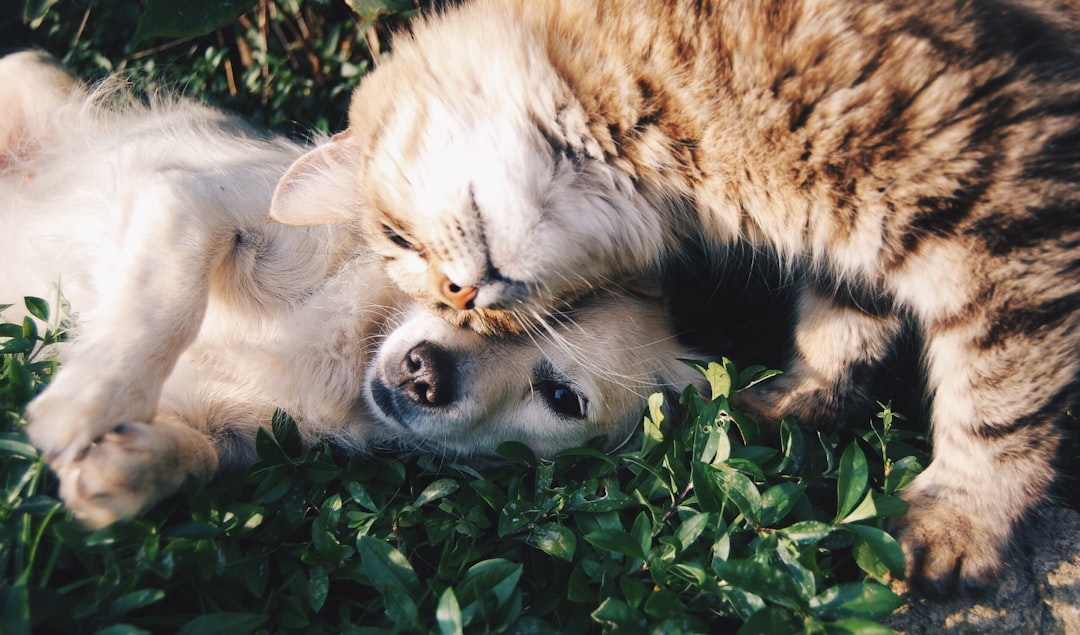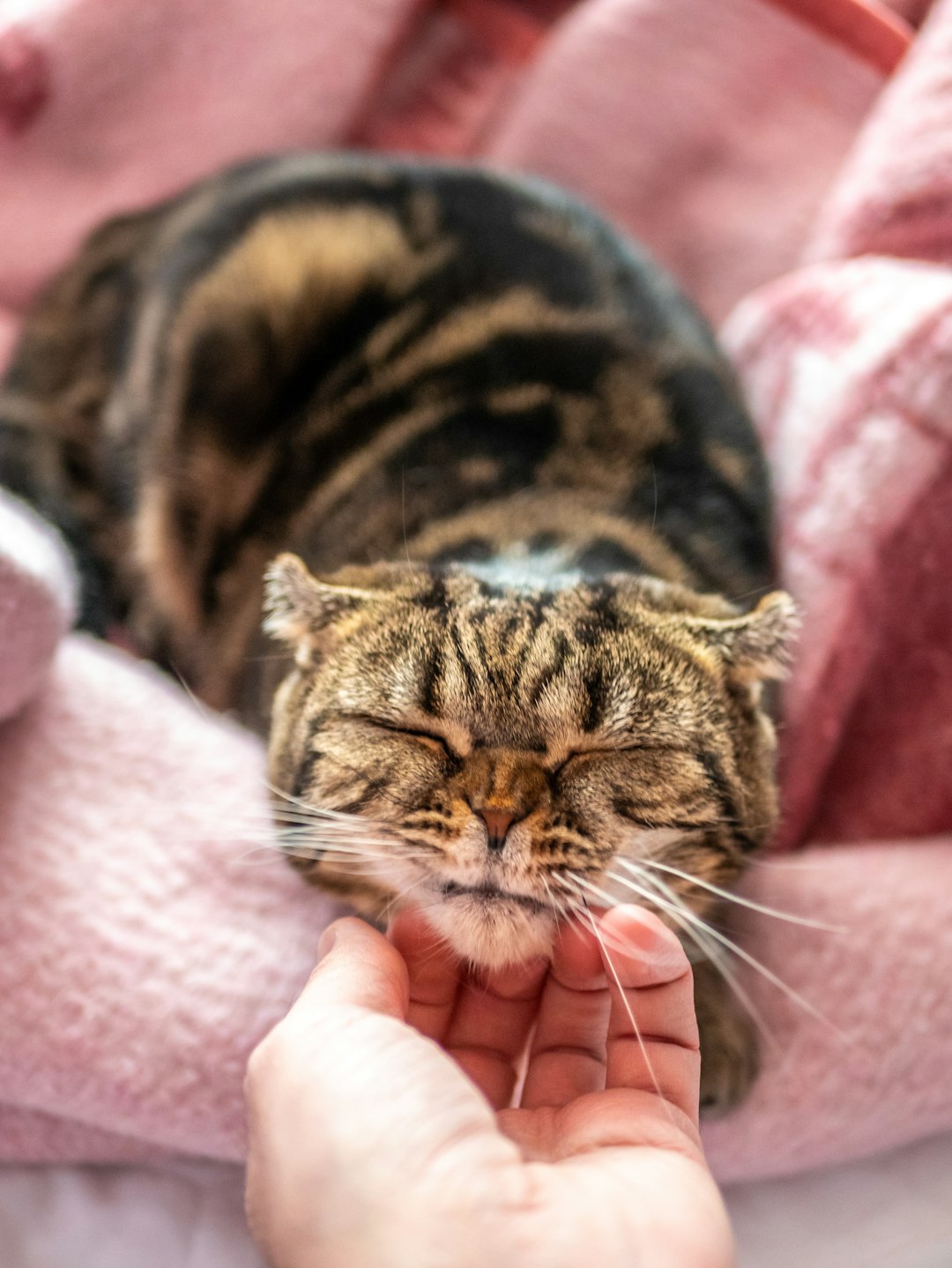When it comes to ensuring the well-being of your furry friends while you’re away, understanding the costs involved is crucial. With various options available, from occasional drop-in visits to full-time care, navigating pet sitter rates can feel overwhelming. However, budgeting for your cat’s care needs doesn’t have to be daunting. By breaking down the common services, comparing rates, and being aware of hidden costs, you can develop a comprehensive financial plan that meets both your cat’s needs and your budget. In this blog post, we will explore essential factors for selecting the right pet sitter, tips for negotiating rates, and strategies for managing seasonal fluctuations, ensuring your feline companion receives the best care without breaking the bank.
Understanding Pet Sitter Rates
When it comes to ensuring that your feline friend is well taken care of, understanding the costs associated with professional pet sitting is essential. Several elements contribute to the overall pricing, which can vary significantly based on location, duration, and the types of services provided.
What Factors Influence Rates?
Several key factors determine the cost of hiring a pet sitter, including:
- Location: Rates differ widely depending on urban versus rural settings.
- Experience Level: More seasoned pet sitters often charge higher fees.
- Service Duration: A quick drop-in visit will cost less than an overnight stay.
- Special Needs: Cats with specific dietary or medical requirements may incur additional fees.
Average Rates Across Different Locations
To provide clarity, here’s a brief overview of typical pricing structures across various regions:
| Location | Average Daily Rate |
|---|---|
| Urban Areas | $25 – $50 |
| Suburban Areas | $20 – $40 |
| Rural Areas | $15 – $30 |
Types of Services Offered
Pet sitting services can vary, each with its associated costs. Here’s a glimpse at typical offerings:
| Service Type | Description | Cost Range |
|---|---|---|
| Drop-in Visits | Short visits to feed and check on pets | $15 – $30 |
| Overnight Stays | Extended care with overnight supervision | $40 – $100 |
| Dog Walking | Regular walking for dogs | $10 – $20 per walk |
| Extended Care | Additional services such as grooming | $20 – $50 |
Understanding these elements will help you budget more effectively when considering your cat’s care needs.
The Importance of Budgeting for Cat Care
Assessing Your Cat’s Needs
Understanding your cat’s specific care requirements is the first step in effective budgeting. Each cat presents unique needs, from basic feeding and litter changes to health monitoring and social interaction. Take into consideration the following factors:
| Need | Description |
|---|---|
| Dietary Needs | Special diets may necessitate more expensive food options. |
| Health Care | Regular veterinary check-ups and vaccinations can increase costs. |
| Social Interaction | Cats requiring more playtime may require more frequent visits. |
Creating a Care Budget
Once you’ve identified your cat’s needs, creating a well-thought-out budget becomes essential. Take into account various factors that contribute to costs, such as:
- Daily Care Costs: Include food, litter, and basic necessities.
- Pet Sitter Rates: Allocate part of your budget for pet sitting, as this will cover visit durations (usually ranging from 30 minutes to several hours).
- Emergencies: Set aside a percentage for unexpected health issues or alternative care needs.
Adjusting Your Financial Plan for Pet Sitting
Budgeting for pet sitting requires flexibility. Here are a few strategies to ensure you remain on track:
- Prioritize Essential Services: Focus on necessary care before considering additional services, like grooming.
- Consider a Monthly Plan: If you anticipate frequent pet-sitting needs, opting for a subscription model can save money.
- Evaluate Seasonal Changes: Be aware that pet sitter rates may fluctuate during peak travel seasons, so plan ahead to avoid surprises.
By recognizing the importance of budgeting for your cat’s care needs, you can ensure your feline friend receives the attention and services they deserve while minimizing financial strain.
Breakdown of Common Services and Their Costs
Understanding the various services offered by pet sitters is crucial for budgeting effectively. Here’s a breakdown of common services and their corresponding costs to help you plan your cat’s care needs.
Daily Visits vs. Overnight Stays
| Service Type | Description | Average Cost per Visit |
|---|---|---|
| Daily Visit | A short visit (30-60 mins) for feeding, playtime, and basic care | $18 – $30 |
| Overnight Stay | An extended stay to provide companionship and care through the night | $75 – $100 |
Daily visits work well for active cats who are fine alone during the day. However, if your cat prefers companionship or needs more care, overnight stays might be a better option.
Specialized Care for Kittens and Seniors
Kittens and senior cats have special care needs that can affect pet sitter rates:
| Cat Age Group | Specialized Services Expected | Average Additional Cost |
|---|---|---|
| Kittens | More intensive care, playtime, and training | $5 – $15 extra per visit |
| Senior Cats | Medication administration and more attention | $10 – $20 extra per visit |
Pet sitters may charge additional fees for these specialized services, reflecting the extra effort required to ensure your specific cat’s needs are met.
Additional Fees for Extra Services
Some sitters may offer extra services that come with additional costs. Check out this table for common extras:
| Extra Service | Description | Average Cost |
|---|---|---|
| Medications | Administering medications as needed | $5 – $10 per visit |
| Grooming | Basic grooming services like brushing | $10 – $25 per session |
| Walking | For those who also need walking services | $15 – $25 per walk |
When budgeting for pet care, be sure to consider these potential extra fees to avoid unexpected costs. This thorough understanding of pet sitting services will empower you to make informed choices for your feline friend.
Comparing Pet Sitter Rates
Researching Local Options
When it comes to comparing pet sitter rates, it’s crucial to understand the local market. Start by gathering information from several pet sitters in your area. Websites, local classifieds, or social media groups can provide valuable insights. Remember, factors like experience, certifications, and reviews play a significant role in the pricing structure.
Here’s how local options might vary:
| Service Type | Average Rate (per visit) |
|---|---|
| Basic Cat Sitting | $15 – $25 |
| Overnight Care | $50 – $75 |
| Special Needs Care | $30 – $60 |
Using Online Tools and Resources
Several online platforms allow you to compare rates easily. Websites such as Rover and Care.com let users view profiles, customer ratings, and pricing. These tools can save you time and help you make an informed choice by filtering sitters based on your specific needs. Often, these platforms also provide calculated averages to give you a clearer understanding of what to expect.
Understanding Value vs. Price
While comparing costs, it’s essential to differentiate between value and mere price. A more affordable rate might seem attractive, but it does not guarantee quality service. Evaluate what’s included in the price—such as extra walks, playtime, or special dietary needs—and ensure that the sitter’s experience matches your pet’s requirements. Opting for a slightly higher fee might offer peace of mind, knowing your beloved pet is in capable hands.
Hidden Costs of Pet Sitting
Understanding the pet sitter rates involves more than just the hourly fee. There are often hidden costs that can inflate your budget unexpectedly. By being aware of these additional expenses, you can plan more effectively.
Travel Fees and Other Add-Ons
Many pet sitters charge extra for travel, particularly if they are located far from your home. This fee usually compensates the sitter for their time and fuel. Here’s a quick overview:
| Service | Estimated Cost |
|---|---|
| Travel Fee | $5 – $20 |
| Overnight Stay | $25 – $60 |
| Daily Walks | $15 – $30 |
Emergency Care Considerations
If your pet requires medical attention while you’re away, you might find additional costs associated with emergency care. Some sitters charge for emergency visits or time spent transporting your pet to the vet. It’s essential to clarify these terms before hiring a sitter.
Potential Costs of Last-Minute Bookings
Finally, booking a pet sitter on short notice can result in higher rates. Many sitters increase their prices for last-minute appointments due to the lack of availability. Notably, this can range from an extra $10 to $50, especially during peak seasons or holidays.
By considering these hidden costs, you can create a more accurate budget for your feline friend’s care while ensuring their well-being. Always discuss these aspects upfront with potential sitters to avoid unpleasant surprises.
Negotiating with Your Pet Sitter
Understanding Sitter Flexibility
When it comes to negotiating with your pet sitter, it’s essential to assess their level of flexibility. Many professional pet sitters are open to adjusting their rates or services based on your specific needs. For instance, if you’re looking for multiple visits per day or longer-term care, it’s worth discussing your budget openly. Pet sitter rates can sometimes fluctuate depending on the time commitment or special requests, so be prepared to ask questions that could yield better pricing options.
Discussing Discounts or Package Deals
Don’t hesitate to bring up the topic of discounts or package deals when talking to your pet sitter. Many pet sitters offer discounts for extended stays or multiple visits, which can significantly help your budget. Here’s a brief comparison to illustrate potential savings:
| Service Type | Standard Rate | Discounted Rate (for 5+ days) |
|---|---|---|
| 30-Minute Visit | $20 | $17 |
| Overnight Stay | $50 | $45 |
| Daily Dog Walking (1 Week) | $120 | $100 |
As this table shows, negotiating for a package deal can lead to considerable savings in the long run.
Building a Long-Term Relationship
Establishing a trusting, long-term relationship with your pet sitter can also work to your advantage. When you show loyalty and commitment, sitters may be inclined to offer you better rates or free services as a gesture of goodwill. Maintaining an open line of communication, leaving positive reviews, and referring friends can all contribute to a fruitful arrangement. In this way, negotiation becomes not just about the money but also about fostering a partnership that benefits both parties.
The Benefits of Hiring a Professional Pet Sitter
Peace of Mind for Owners
Choosing a professional pet sitter for your feline friend offers invaluable peace of mind during your absence. You can rest assured knowing that your cat is in the hands of a trained expert who understands animal behavior and needs. This reduces anxiety, allowing you to enjoy your time away without constantly worrying about your pet’s well-being.
Health and Safety of Your Cat
Professional pet sitters prioritize the health and safety of your cat. They are trained to recognize signs of illness or distress, taking appropriate action when necessary. Additionally, they are knowledgeable about administering medication, ensuring that any required treatments are conducted correctly. Here’s a quick look at some key health and safety benefits:
| Benefit | Details |
|---|---|
| Regular Monitoring | Professionals routinely check on your cat’s health. |
| Emergency Preparedness | They know what steps to take in case of an emergency. |
| Hygiene Practices | Professionals follow strict sanitation protocols. |
Personalized Care Compared to Boarding
Unlike commercial boarding facilities, hiring a pet sitter allows for personalized care tailored to your cat’s unique needs. Pet sitters can maintain your cat’s routine regarding feeding, playtime, and affection, which is essential for their emotional well-being. Here’s a comparison of pet sitting versus boarding:
| Aspect | Pet Sitting | Boarding |
|---|---|---|
| Routine | Maintained as per owner’s specifications | Often disrupted |
| Environment | Comfortable home setting | Unfamiliar boarding facility |
| Individual Attention | High level of personalized care | Shared space with multiple pets |
By opting for a professional pet sitter, you enhance your cat’s quality of life, ensuring they receive the care they deserve while you are away.
How to Choose the Right Pet Sitter for Your Budget
Choosing the right pet sitter is crucial not only for your cat’s well-being but also for staying within your budget. Here are some effective strategies to ensure you select the right match without overstretching your finances.
Evaluating References and Reviews
Before hiring a pet sitter, it’s essential to research their reputation. Start by asking for references and reading online reviews. Checking platforms like Yelp or PetSitters.com can provide valuable insights into other pet owners’ experiences. Look for sitters with consistently positive feedback regarding reliability, courtesy, and care quality. This will help you find someone trustworthy without overspending.
Conducting Interviews Effectively
An interview is a pivotal step in finding the ideal sitter. Prepare a list of questions focused on their experience with cats, specific care practices, and pet sitter rates. Discuss how they handle emergencies and their availability. Assess their enthusiasm and knowledge about feline care, which can be indicative of their capability.
Sample Questions to Ask:
| Question | Importance |
|---|---|
| How long have you been pet sitting? | Shows experience level |
| What is your policy on emergencies? | Indicates preparedness |
| Can you share your usual pet sitter rates? | Helps you understand budget compatibility |
Trial Visits with Potential Sitters
Finally, consider scheduling trial visits with promising candidates. This allows you to observe their interaction with your cat and gauge your pet’s comfort. During these visits, discuss your budget openly to ensure alignment. Not only does this provide peace of mind, but it also helps you confirm that the sitter’s services fit within your financial plan.
By following these steps, you can make an informed decision that balances quality care for your cat and adherence to your budget.
Planning for Seasonal Variations in Rates
Understanding Holiday Pricing Changes
During holiday seasons, pet sitter rates typically see a surge due to increased demand. For instance, around Thanksgiving and Christmas, pet sitters often implement higher prices to accommodate the influx of requests. Pet sitter rates during these peak periods can be approximately 20% to 50% higher compared to regular days.
| Holiday | Average Rate Increase (%) |
|---|---|
| Thanksgiving | 30% |
| Christmas | 50% |
| New Year’s Eve | 40% |
Planning for Summer Travel
Summer vacations can also prompt heightened rates, as many pet owners search for trustworthy care during their trips. To mitigate costs, consider booking a pet sitter well in advance. Some pet sitters may offer early bird discounts or retain consistent pricing if booked a few months ahead.
Strategies for Off-Peak Savings
Off-peak months, typically outside the school vacation and holiday seasons, often come with lower pet sitter rates. By scheduling care for your cat during these leaner periods, you can save significantly. Additionally, here are some strategies to optimize costs:
- Flexible Dates: If you have flexible travel dates, opt for times when fewer pet owners are traveling.
- Discount Packages: Inquire about multi-day discounts or package deals for extended services.
- Local Sitters: Look for local pet sitters rather than larger agencies, as they often have lower overhead and competitive rates.
By understanding seasonal rate variations and strategically planning, you can ensure your cat’s care remains budget-friendly without sacrificing quality.
Frequently Asked Questions
What factors influence pet sitter rates?
Pet sitter rates vary based on several factors, including the sitter’s experience and qualifications, geographical location, the services offered (such as walks, playtime, or administering medication), the number of pets, and the duration of the visit. Additionally, peak seasons or holidays can increase rates due to higher demand. Understanding these factors will help you budget appropriately and select the right pet sitter for your cat’s specific needs.
How can I determine a fair rate for a pet sitter?
To determine a fair rate for a pet sitter, start by researching local prices, which can vary widely by region. Check online platforms where sitters list their services, or ask friends and neighbors for recommendations and their experiences. Consider factors such as the sitter’s experience level, services offered, and the number of pets involved. It’s essential to balance affordability with the quality of care your cat will receive.
Are there any additional costs to consider beyond the basic rate?
Yes, beyond the basic pet sitting rate, there can be additional costs to consider. These may include service fees for last-minute bookings, transportation costs if a sitter needs to travel a significant distance, and extra charges for weekends or holidays. Additionally, if your cat requires special care, such as medication administration, grooming, or extended visits, these services may incur further costs. Be sure to ask about all potential fees upfront.
What should I look for in a pet sitter besides rates?
When selecting a pet sitter, look for more than just competitive rates. Assess their experience with cats, references from previous clients, and any certifications they may hold. It’s also important to ensure they are insured and bonded for your peace of mind. Arrange a meet-and-greet to observe how they interact with your cat, and ask about their emergency procedures and communication style to ensure they align with your expectations.
How can I budget effectively for a pet sitter?
To budget effectively for a pet sitter, begin by estimating how often you will need their services, whether for a few days or on a recurring basis. Research the average rates in your area and consider both typical and peak season pricing. It’s smart to set aside a specific amount each month, factoring in holidays or special events where rates may increase. Also, consider any additional expenses like pet supplies, that may arise during the sitter’s engagement.



